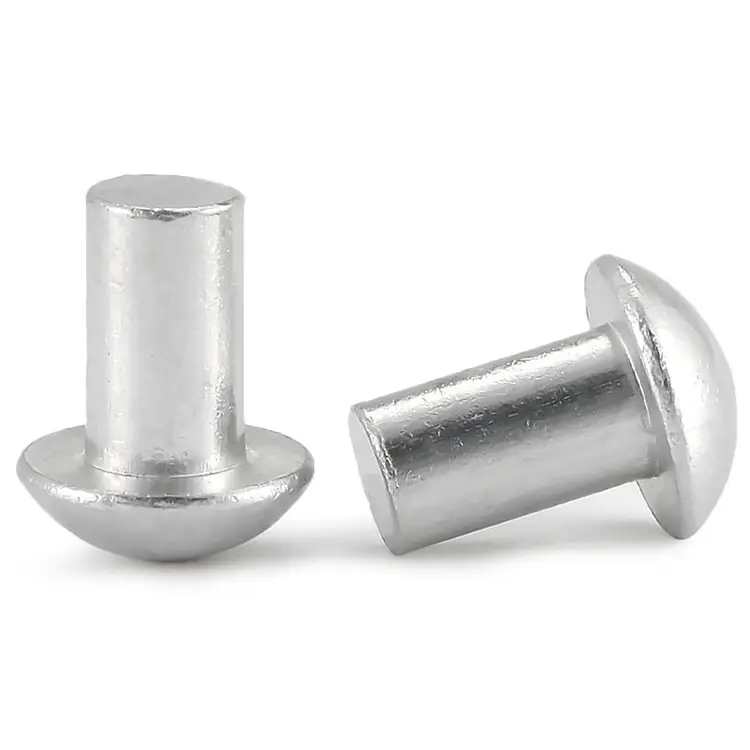Solid Rivets' Environmental Impact
2025-06-20
Introduction
In the modern industrial landscape, solid rivets are integral components used in various manufacturing sectors, particularly in the aerospace, automotive, and construction industries. While they offer structural integrity, durability, and ease of use, the environmental impact of solid rivets—ranging from resource extraction to waste management—has become a critical consideration. This essay delves into the environmental implications of solid rivets, addressing their production, usage, and disposal phases.
Resource Extraction and Manufacturing
The production of solid rivets begins with the extraction of raw materials, primarily metals such as steel, aluminum, and copper. Mining these materials can have significant environmental consequences. For example, extracting bauxite for aluminum involves energy-intensive processes that contribute to greenhouse gas emissions, habitat disruption, and soil erosion. Similarly, mining for steel and copper has been linked to water pollution, land degradation, and deforestation.
Once the raw materials are sourced, the manufacturing process involves casting, forming, and heat treating the metal, all of which require substantial energy inputs. The energy consumption, often derived from fossil fuels, exacerbates the carbon footprint of solid rivets. Furthermore, manufacturing facilities that produce rivets may generate waste products and pollutants, including heavy metals and chemicals, which can contaminate surrounding ecosystems.

Product Use and Durability
Solid rivets, when applied correctly, enhance the durability and longevity of structures. This can lead to a reduced need for repairs and replacements, potentially lowering the overall resource consumption over the life cycle of the product. However, the environmental benefits of rivet durability are contingent upon the proper design and usage of these components.
For instance, in the aerospace industry, solid rivets are employed to maintain the structural integrity of aircraft, which are designed for longevity and safety. The extended lifespan of such products means that fewer resources are required for maintenance, repair, or replacement. On the other hand, industries where rivets are used in products with a shorter life span or frequent turnover may not experience the same environmental advantage.
Recycling and Disposal Challenges
When solid rivets reach the end of their useful life, they often face disposal challenges. The process of removing rivets, particularly in large-scale industrial settings, can be labor-intensive and may generate waste that is difficult to recycle. Depending on the metal used, the rivets may be recyclable; however, the logistics of retrieving and reprocessing these materials can be complex.
Aluminum rivets, for instance, are generally easier to recycle compared to steel or copper, which require more specialized facilities and processes. However, not all rivets are effectively recycled, and a significant portion may end up in landfills. This contributes to resource wastage, as well as the environmental burden associated with waste management.
Potential Solutions and Innovations
To mitigate the environmental impact of solid rivets, various strategies can be employed. One such solution is the development of alternative materials. For example, researchers are exploring biodegradable or recyclable composites that could replace traditional metal rivets, reducing the environmental toll of their production and disposal. Additionally, advances in manufacturing technology could lead to more energy-efficient processes, reducing the carbon footprint associated with rivet production.
Furthermore, improved recycling infrastructure and practices could enhance the recovery of valuable materials like aluminum and copper. Closed-loop recycling systems, where materials are continuously reused in the manufacturing process, could significantly reduce the need for virgin resources and the associated environmental impacts.
Conclusion
Solid rivets, while essential to modern manufacturing, carry notable environmental costs throughout their life cycle, from resource extraction to disposal. Addressing these impacts requires a multifaceted approach, including the adoption of sustainable materials, energy-efficient manufacturing processes, and improved recycling systems. By investing in these solutions, industries can reduce the ecological footprint of solid rivets, ultimately contributing to more sustainable manufacturing practices.
As a professional manufacturer and supplier, we provide high-quality products. If you are interested in our products or have any questions, please feel free to contact us.